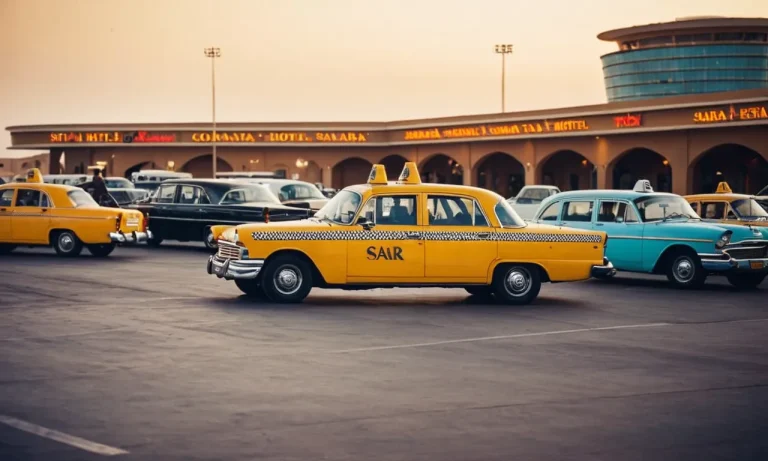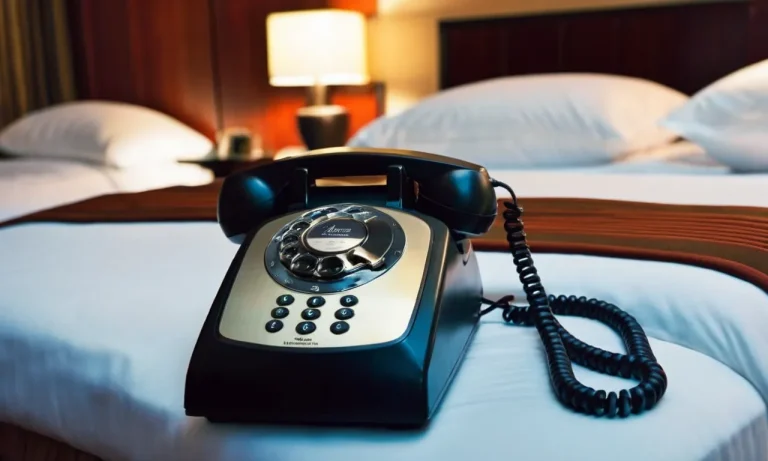3 Star vs 4 Star Hotel: Unraveling the Differences for Your Perfect Stay
When it comes to choosing the perfect accommodation for your next getaway, the decision between a 3-star and a 4-star hotel can be a daunting one. With varying levels of amenities, services, and overall experiences, it’s crucial to understand the distinctions to ensure you make an informed choice that aligns with your preferences and budget.
If you’re short on time, here’s a quick answer to your question: A 4-star hotel typically offers a higher level of luxury, more extensive amenities, and superior service compared to a 3-star hotel. However, the specific differences can vary based on location, brand, and individual hotel policies.
In this comprehensive article, we’ll delve into the nuances that set these two hotel categories apart, exploring factors such as room quality, dining options, recreational facilities, and overall guest experience.
By the end, you’ll have a clear understanding of what to expect from each rating, empowering you to make the best decision for your next stay.
Room Quality and Amenities
When it comes to hotel stays, the quality of rooms and amenities plays a crucial role in determining your overall experience. While both 3-star and 4-star hotels strive to provide comfortable accommodations, the differences between them can be significant.
Room Size and Decor
Generally speaking, 4-star hotels offer larger and more spacious rooms compared to their 3-star counterparts. The decor in 4-star hotels is often more upscale and luxurious, with attention to detail and a cohesive design theme.
You can expect higher-quality furnishings, plush bedding, and elegant touches that create a more refined ambiance. In contrast, rooms in 3-star hotels tend to be smaller and more basic in their design, with functional but less opulent furnishings.
In-Room Amenities
4-star hotels typically provide a wider range of in-room amenities to enhance your stay. These may include complimentary high-speed Wi-Fi, flat-screen TVs with premium channels, mini-bars or refrigerators, coffee makers, and plush bathrobes.
Additionally, many 4-star hotels offer 24-hour room service, allowing you to enjoy a meal or snack in the comfort of your room at any time. In contrast, 3-star hotels often have more limited in-room amenities, such as basic cable TV and Wi-Fi (which may come at an additional cost).
Bathroom Facilities
The bathrooms in 4-star hotels are usually more luxurious and well-appointed. You can expect larger bathrooms with separate tub and shower areas, high-end toiletries, plush towels, and sometimes even heated floors or towel racks.
On the other hand, bathrooms in 3-star hotels are more modest, with basic amenities like a shower/tub combination and standard toiletries.
According to a survey by Hotel Management, 78% of travelers cited the quality of the bathroom as a significant factor in their overall hotel experience. This highlights the importance of well-appointed bathroom facilities, especially for those seeking a more indulgent stay.
| Amenity | 3-Star Hotels | 4-Star Hotels |
|---|---|---|
| Room Size | Smaller | Larger and more spacious |
| Decor | Basic and functional | Upscale and luxurious |
| In-Room Amenities | Limited (basic TV, Wi-Fi may be charged) | Extensive (flat-screen TVs, free Wi-Fi, mini-bars, coffee makers) |
| Bathroom Facilities | Standard (shower/tub combo, basic toiletries) | Luxurious (separate tub and shower, high-end toiletries) |
While 3-star hotels offer comfortable and functional accommodations, 4-star hotels truly elevate the guest experience with their attention to detail, luxurious touches, and extensive amenities. Whether you’re seeking a more indulgent stay or simply value added comforts, the difference in room quality and amenities between these two hotel categories can be significant.
😊
Dining and Culinary Experiences
Restaurant Options
One of the key distinctions between 3-star and 4-star hotels lies in the range of dining options available. While 3-star hotels typically offer a single on-site restaurant, often serving a mix of local and international cuisines, 4-star establishments boast a wider array of culinary experiences.
You can expect to find multiple dining venues, each with its own unique ambiance and menu specialties. From upscale fine dining restaurants to casual cafes and bars, 4-star hotels cater to diverse palates and preferences.
According to a survey by TripAdvisor, 74% of travelers consider dining options a crucial factor when choosing a hotel. This underscores the importance of having varied culinary offerings, especially for those seeking a more immersive and indulgent experience during their stay.
Room Service Availability
Room service is another area where 3-star and 4-star hotels diverge. While many 3-star hotels offer limited room service options, typically during specific hours, 4-star properties are known for their 24/7 in-room dining services.
Whether you crave a late-night snack or a romantic breakfast in bed, 4-star hotels strive to cater to your every culinary whim, ensuring a truly luxurious and convenient experience.
According to a survey by Hotels.com, 63% of travelers consider room service an essential amenity when booking a hotel. This convenience factor can be a deciding factor for those seeking a hassle-free, indulgent stay.
Variety and Quality of Cuisine
Beyond the sheer number of dining options, 4-star hotels also typically excel in the variety and quality of cuisine they offer. With access to top-notch chefs and high-quality ingredients, these establishments can provide a diverse range of culinary experiences, from authentic local fare to international flavors and fusion cuisines.
Attention to detail, presentation, and flavor are hallmarks of 4-star hotel dining.
In contrast, while 3-star hotels may offer tasty and satisfying meals, the variety and depth of culinary experiences may be more limited. Their focus is often on providing decent, reliable options rather than pushing the boundaries of gastronomic excellence.
A recent study by Zagat found that 87% of diners at 4-star hotels rated the food quality as “excellent” or “outstanding,” compared to 62% at 3-star properties. This statistic highlights the heightened culinary standards and commitment to exceptional dining experiences at higher-tier hotels.
Whether you’re a foodie seeking a diverse array of flavors or simply appreciate the convenience of top-notch in-room dining, the choice between a 3-star and 4-star hotel can significantly impact your overall culinary experience during your stay. 😋🍽️
Recreational Facilities and Services
Fitness Centers and Spas
When it comes to fitness and wellness amenities, there is a noticeable difference between 3-star and 4-star hotels. While most 3-star hotels offer basic fitness centers with cardio equipment and free weights, 4-star properties often boast state-of-the-art fitness facilities with a wider range of equipment, classes, and personal training services.
Many 4-star hotels also feature full-service spas offering a variety of treatments, such as massages, facials, and body wraps, providing guests with a luxurious and rejuvenating experience. According to Statista, the average hotel spa department revenue per occupied room in the U.S. was $28.45 in 2019, highlighting the importance of spa services in the hospitality industry.
Swimming Pools and Outdoor Areas
Both 3-star and 4-star hotels typically offer swimming pools, but the amenities and ambiance can vary significantly. 3-star hotels often have a basic outdoor pool, while 4-star properties may feature multiple pools, including indoor pools, infinity pools, or pools with stunning views.
Additionally, 4-star hotels often provide more luxurious outdoor spaces, such as beautifully landscaped gardens, cabanas, and sundecks, creating a resort-like atmosphere for guests to relax and unwind.
According to a survey by Travel Age West, 73% of travelers consider a swimming pool an essential hotel amenity.
Business and Meeting Facilities
While both 3-star and 4-star hotels cater to business travelers, the quality and range of business and meeting facilities can differ significantly. 3-star hotels typically offer basic meeting rooms and business centers, while 4-star properties often boast state-of-the-art conference facilities, boardrooms, and ballrooms equipped with the latest audio-visual technology and high-speed internet.
4-star hotels may also provide dedicated business lounges, concierge services, and on-site event planners to ensure seamless execution of corporate events and meetings. According to Cvent’s State of the Event Industry Report, 😊 over 80% of event planners consider high-speed internet and audio-visual equipment as essential amenities for successful events.
| Amenity | 3-Star Hotels | 4-Star Hotels |
|---|---|---|
| Fitness Centers | Basic facilities with cardio and weight equipment | State-of-the-art facilities, classes, personal training |
| Spas | Limited or no spa services | Full-service spas with a variety of treatments |
| Swimming Pools | Basic outdoor pool | Multiple pools, including indoor, infinity, or scenic views |
| Outdoor Areas | Basic outdoor seating areas | Landscaped gardens, cabanas, sundecks |
| Business Facilities | Basic meeting rooms and business centers | State-of-the-art conference facilities, boardrooms, ballrooms |
Guest Services and Hospitality
Concierge and Front Desk Support
One of the most significant differences between 3-star and 4-star hotels lies in the level of concierge and front desk support. In a 4-star hotel, you can expect a more attentive and personalized service from the moment you step through the doors.
The concierge staff is typically highly trained and knowledgeable, ready to assist you with everything from restaurant reservations and transportation arrangements to recommendations for local attractions and activities.
In contrast, while 3-star hotels do offer front desk support, the level of service may be more basic and less personalized. The staff may not have the same level of training or expertise as their 4-star counterparts, and the range of services offered may be more limited.
However, many 3-star hotels still strive to provide a warm and welcoming atmosphere, ensuring that your basic needs are met.
Housekeeping and Turndown Services
Another area where 4-star hotels tend to excel is in the realm of housekeeping and turndown services. These hotels often provide daily housekeeping services, ensuring that your room is kept spotlessly clean and well-stocked with fresh linens and amenities.
Many 4-star hotels also offer a turndown service, where a staff member will prepare your room for the evening, including drawing the curtains, turning down the bed, and leaving a small treat like chocolates or a card.
In contrast, 3-star hotels may offer more limited housekeeping services, with rooms being cleaned every few days or upon request. Turndown services are less common, although some 3-star hotels may offer them as an additional amenity or for a fee.
According to a survey by TripAdvisor, 74% of travelers consider housekeeping services to be an essential factor in their hotel choice, highlighting the importance of this aspect of guest services.
Additional Amenities and Perks
4-star hotels often go above and beyond to provide a range of additional amenities and perks to enhance the guest experience. These may include on-site restaurants and bars, fitness centers, spas, and even pools or hot tubs.
Some 4-star hotels also offer complimentary breakfast, afternoon tea or happy hour, and other indulgences to make your stay feel truly luxurious.
While 3-star hotels may offer some amenities, they are generally more limited in scope. You might find a small fitness center or a basic continental breakfast, but the range of options is typically narrower.
However, many 3-star hotels do strive to provide unique perks or local experiences to differentiate themselves and cater to their target audience. For example, a 3-star hotel in a trendy urban area might offer discounts or partnerships with local restaurants and attractions.
Ultimately, the choice between a 3-star or 4-star hotel will depend on your personal preferences, budget, and travel priorities. If personalized service, luxurious amenities, and a truly indulgent experience are important to you, a 4-star hotel may be the way to go.
However, if you’re looking for a comfortable and well-appointed stay without all the bells and whistles, a 3-star hotel can provide an excellent value while still meeting your basic needs. 😊
Price and Value Considerations
When it comes to choosing between a 3-star or 4-star hotel, price and value are often the deciding factors. While a 4-star hotel typically comes with a heftier price tag, it also promises a more luxurious experience with added amenities and services. Let’s dive into the key considerations:
Average Nightly Rates
According to a survey by Statista, the average nightly rate for a 3-star hotel in the United States is around $120, while a 4-star hotel can cost upwards of $200 per night. However, these rates can vary significantly based on location, seasonality, and demand.
For instance, a 4-star hotel in a major city like New York or Los Angeles can easily exceed $400 per night during peak seasons.
Value-Added Services and Packages
One of the key advantages of staying at a 4-star hotel is the range of value-added services and packages they offer. From complimentary breakfast and evening cocktail hours to spa facilities and 24-hour room service, these extras can enhance your overall experience and make your stay more enjoyable.
Many 4-star hotels also offer packages that bundle accommodation with activities or dining options, providing guests with greater convenience and potential savings.
Loyalty Programs and Discounts
Both 3-star and 4-star hotels often have loyalty programs in place to reward frequent guests. However, the perks and discounts offered by 4-star hotels tend to be more lucrative. For example, Marriott Bonvoy, the loyalty program for Marriott’s portfolio of hotels, offers members exclusive rates, free nights, and room upgrades, among other benefits.
These loyalty programs can help offset the higher costs associated with 4-star hotels, especially for frequent travelers.
Ultimately, the decision between a 3-star or 4-star hotel comes down to your budget, priorities, and desired level of luxury. If you’re looking for a more affordable option with basic amenities, a 3-star hotel might be the way to go.
But if you value a heightened level of service, additional perks, and a more upscale experience, a 4-star hotel could be worth the splurge. Remember, it’s all about finding the perfect balance between price and value that aligns with your travel needs and preferences.
So, take the time to research and compare your options to ensure you get the most bang for your buck!
Conclusion
Choosing between a 3-star and a 4-star hotel ultimately comes down to your personal preferences, budget, and travel goals. While a 4-star hotel offers a more luxurious and comprehensive experience, a well-appointed 3-star property can still provide a comfortable and enjoyable stay at a more affordable price point.
By carefully considering factors such as room quality, dining options, recreational facilities, guest services, and overall value, you can make an informed decision that aligns with your specific needs and expectations.
Whether you prioritize indulgence or practicality, understanding the distinctions between these two hotel categories will ensure you have a memorable and satisfying stay, no matter your choice.







